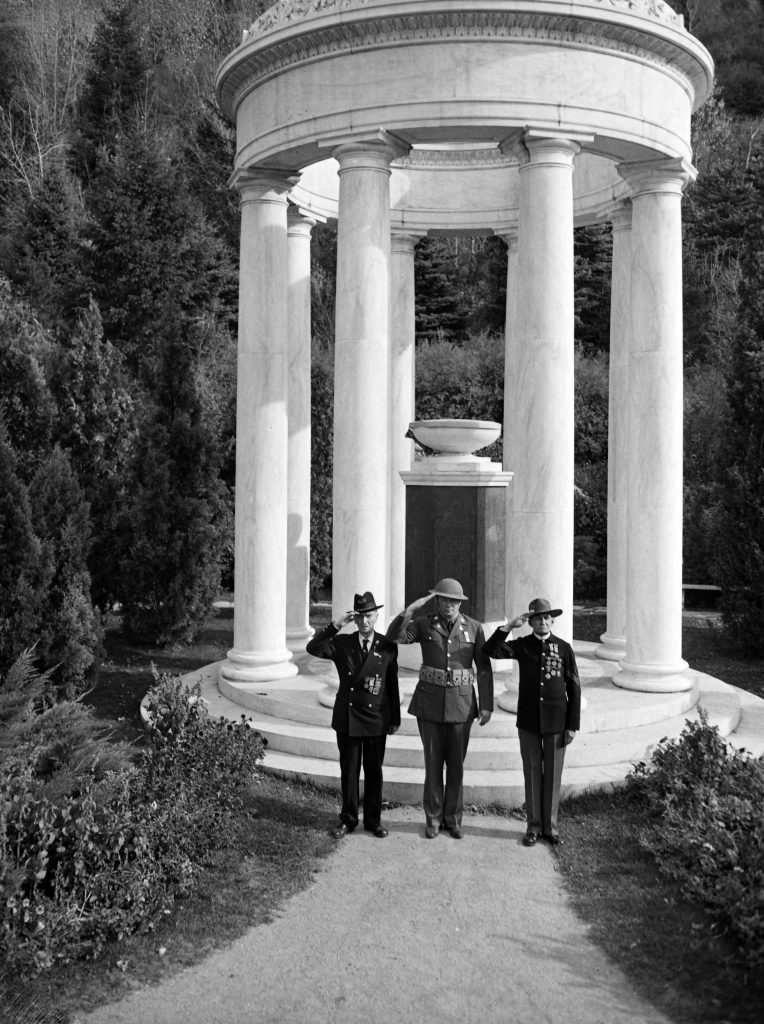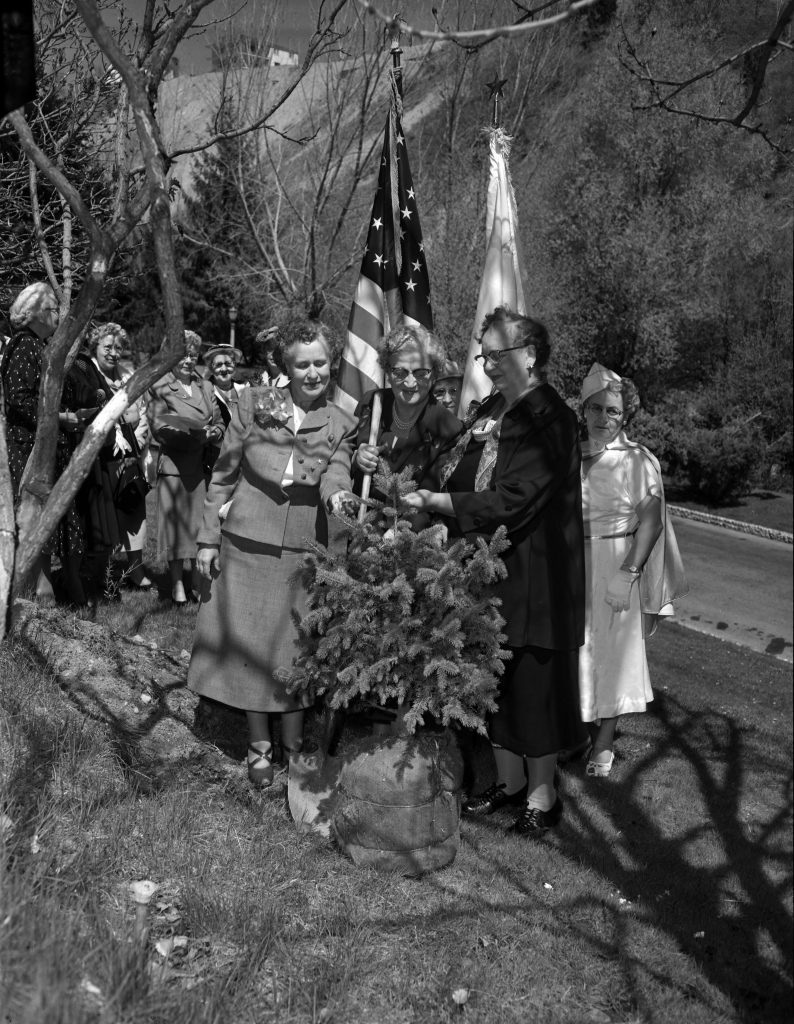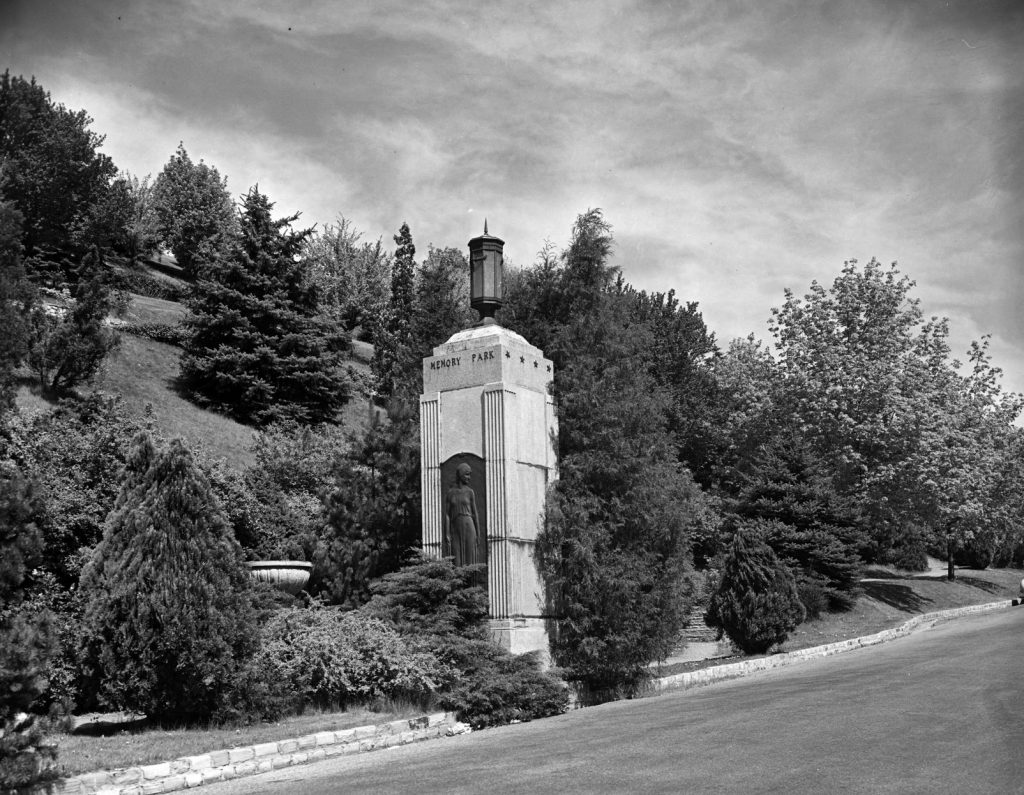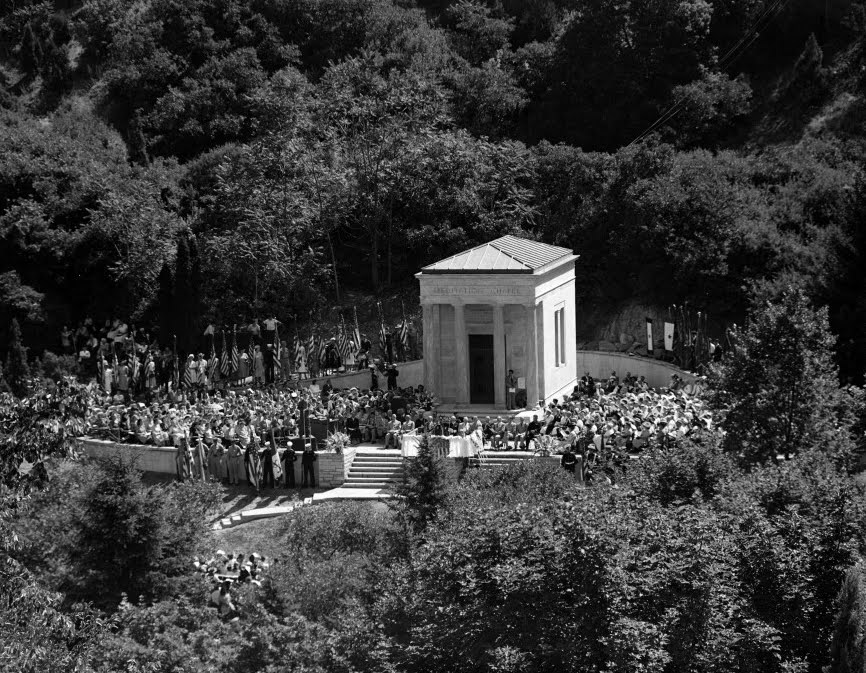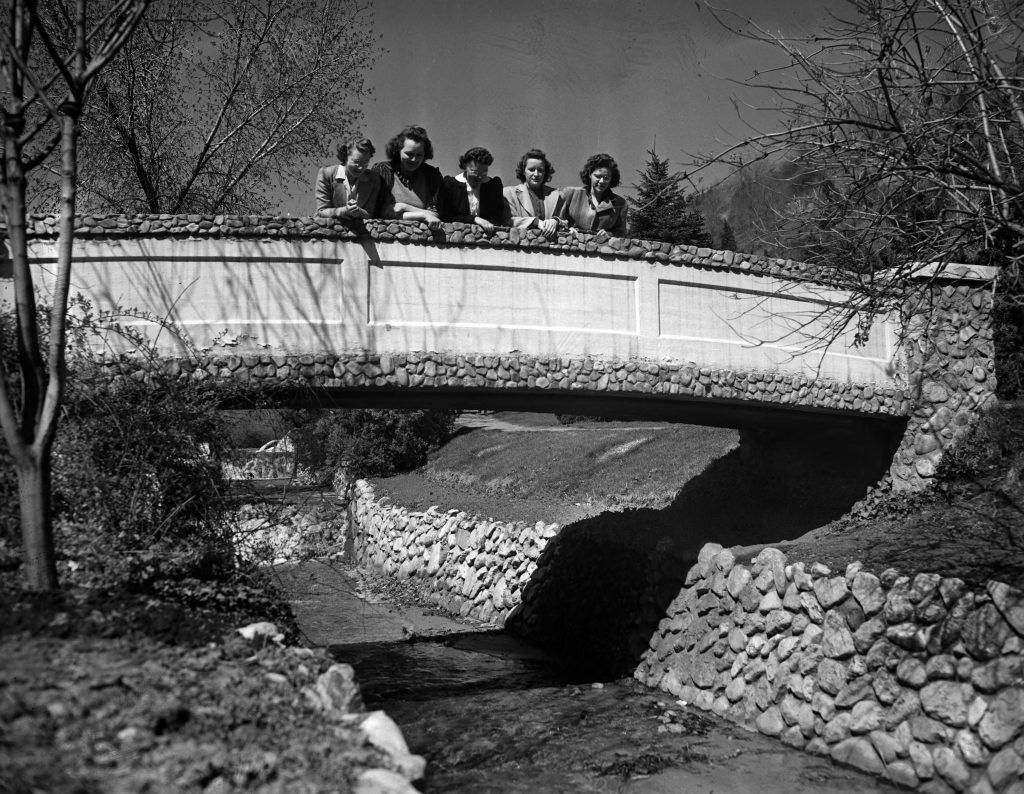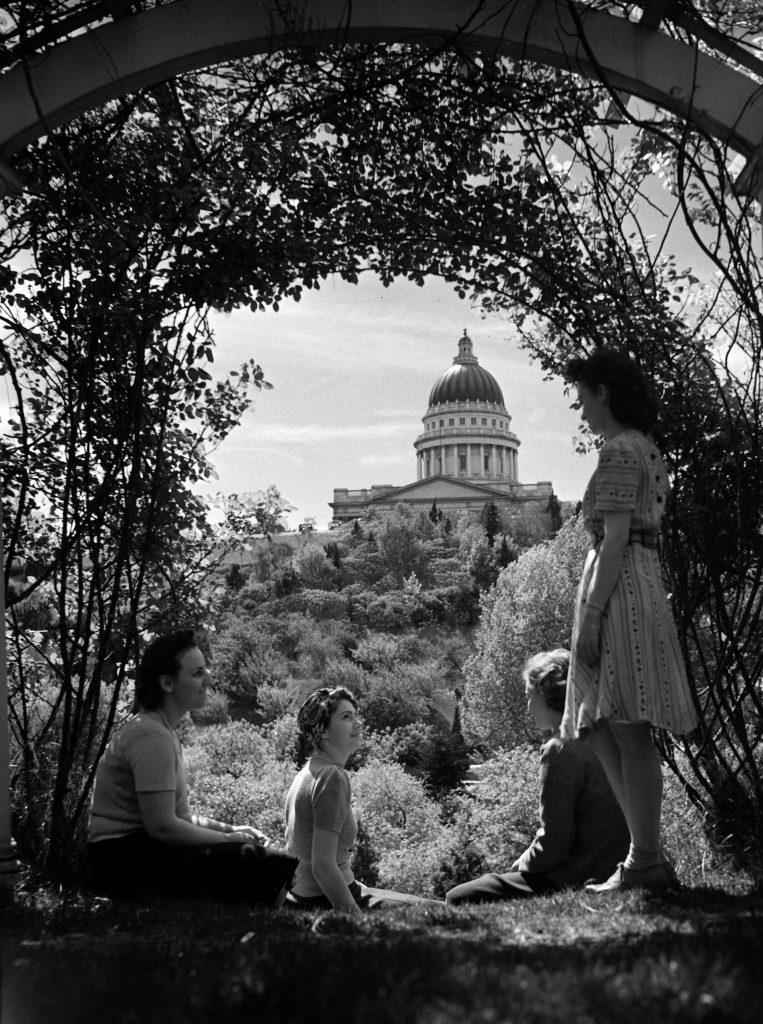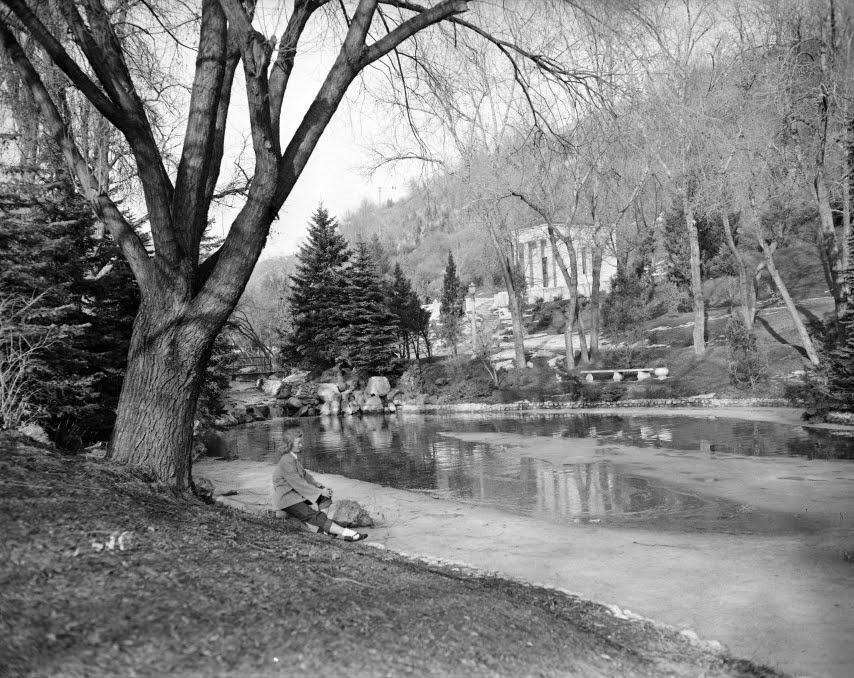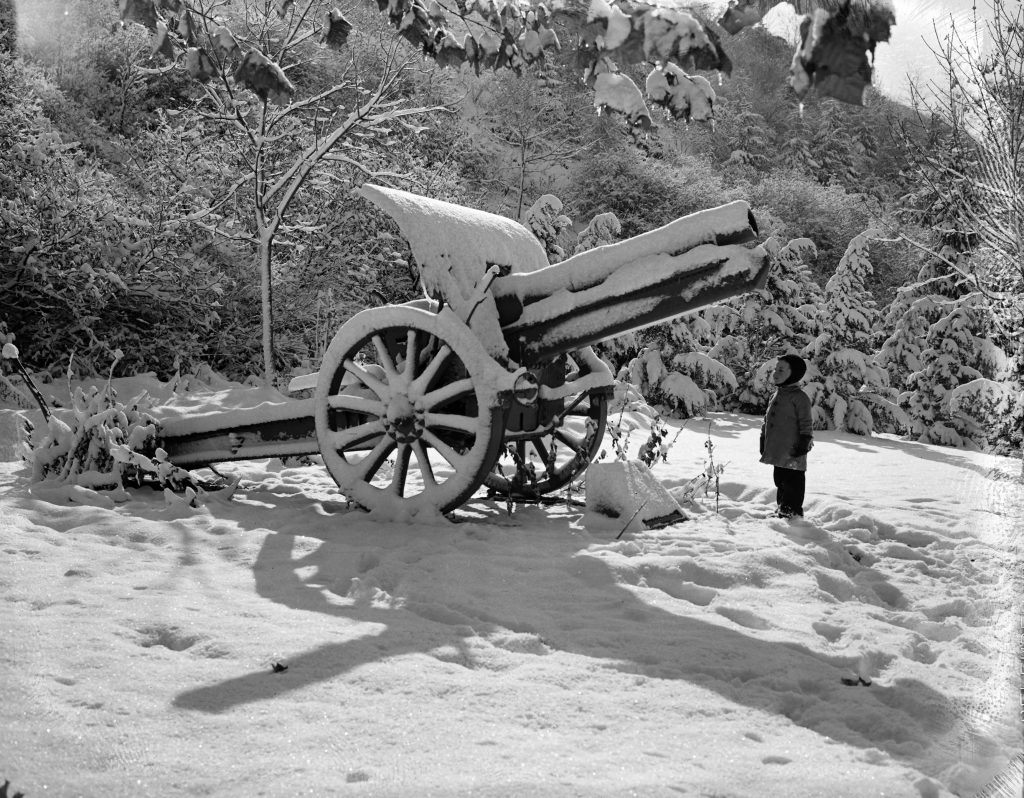Amenities
- Restroom
- Jogging/Walking Path
- Drinking Fountain
- Off-leash Dog Area
- Picnic Tables
History of Memory Grove
Like many other cities in the United States, Salt Lake City’s population doubled in size during the early 1900s, overcrowding urban areas. As a response to issues associated with urbanization, a movement for parks in cities was born. In 1902, Salt Lake City acquired the land in the lower City Creek Canyon, a prime location for recreation. Although the City passed the resolution to create the park in 1902, it would take two decades to see any significant improvements. In the 1920s, women of the Service Star Legion requested that the City designate the area as a memorial to America’s fallen military men, later to be dedicated as Memorial Park in 1924. They led the first of many contributions to the park with trees and monuments.
The first memorial built in the park is the Pagoda, a classical marble structure made of eight columns that support a circular entablature. The marble came from the same Vermont quarry that provided marble for the Lincoln Monument in Washington D.C. Just north of the Pagoda is the Harbor of Beauty, a pond dedicated to the memory of fallen American sailors.
1927 brought two memorials; a footbridge from the Kiwanis Club, and a tall gray granite shaft and circular bench, erected by the 145th Field Artillery. On the structure is a bas-relief plaque featuring horse-drawn artillery of seventeen horses and six men.
In 1948 the Meditation Chapel was built by Mr. and Mrs. Ross Beason as a memorial to their son and other Utah sons who died in World War II. The chapel, made of Georgian marble, a copper roof, and sculpted bronze doors, resembles a Greek temple. Surrounding the temple are markers holding the names of men whose bodies were never recovered from the war—a beautiful tribute to the ultimate sacrifice of life.
